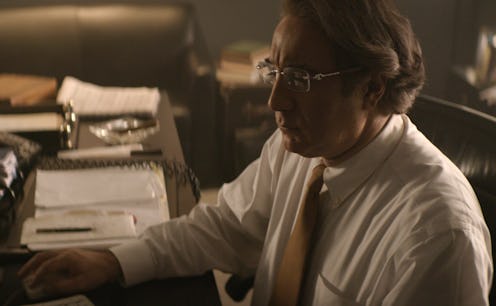Streaming
Netflix’s Madoff: The Monster Of Wall Street Dives Into The Biggest Ponzi Scheme In History
It’s estimated Bernie Madoff stole billions over decades.

After Inventing Anna and Lords of Scam, Netflix is diving into the world of white-collar crime again with Madoff: The Monster of Wall Street. The documentary tells the story of Bernie Madoff, a Wall Street money manager who carried out the largest Ponzi scheme in history and defrauded thousands of investors over the course of decades.
The four-part series charts Madoff’s story, from a middle-class kid in Queens to an influential power broker who helped to launch the first electronic stock exchange, NASDAQ, and even advised the Securities and Exchange Commission (SEC) on the system. The documentary also debunks a popular misconception: that Madoff worked alone to pull off his crimes. Instead, the series shows how Madoff built up a team of co-conspirators and why many institutions were willing to overlook Madoff’s suspicious behavior until it was too late.
Here’s everything else to know about Madoff and his scheme.
How Much Money Did Bernie Madoff Steal?
According to CNBC, it’s estimated that Madoff stole around $65 billion since the 1970s. He defrauded over 40,000 people from 125 countries until December 2008, when his two sons turned him in. Victims included director Steven Spielberg, actor Kevin Bacon, Nobel Peace Prize winner Elie Weisel, nonprofit organizations, and countless everyday people.
How Did Bernie Madoff's Ponzi Scheme Work?
According to the official court documents, Madoff was the head of Bernard L. Madoff Investment Securities LLC, a business that advised clients about stocks and bought and sold them on people’s behalf. From the 1970s to December 2008, Madoff was accused of carrying on a Ponzi scheme: a form of fraud in which the belief in the success of a nonexistent enterprise is fostered by the payment of quick returns to the first investors from the money of later investors. He was accused of scheming to defraud clients under false pretenses, failing to invest funds as promised, and moving investors' funds into his own bank account without their knowledge.
To execute this scheme, Madoff created a reputation for being able to generate steady returns for high-value clients. He would solicit clients on the promise that he would use their money to purchase large shares of popular stocks, and they would become rich for relatively low risk. He said he would do this by using an innovative strategy he called “split strike conversion.” He claimed he knew which direction the S&P 100 was moving, and he would “opportunistically” time his investments into the right common stocks to make a profit. He also claimed he’d limit losses by buying contracts related to those common stocks. This is actually a legitimate trading strategy called “long stock collar,” which is meant to put limits on both gains and losses.
But investigators said that Madoff did not actually execute any trading for his clients. Instead, he simply deposited all the investors’ funds in his own Chase bank account and then paid off new customers with funds from earlier customers. So he essentially ran a pyramid scheme and provided customers with a falsified account statement.
It worked for years until 2008 when the financial crisis caused many clients to ask for their money back. On Dec. 10, 2008, Madoff confessed to his sons, Mark and Andrew, about the fraud. They immediately alerted the authorities, and the FBI raided Madoff’s office in the Lipstick Building in Manhattan on Dec. 11, 2008.
Somehow the SEC never caught on to Madoff’s schemes. In an investigation, SEC’s inspector general H. David Kotz wrote that for years SEC staff just took Madoff’s word that his business was legitimate. “When Madoff provided evasive or contradictory answers to important questions in testimony, they simply accepted as plausible his explanations,” Kotz wrote.
Where Is Bernie Madoff Today?
In April 2021, Bernie Madoff passed away from kidney disease at the Federal Medical Center in Butner, North Carolina. He was sentenced to a 150-year prison term for securities fraud on March 12, 2009, after pleading guilty to 11 federal crimes and admitting to operating the largest private Ponzi scheme in history.
“When I began my Ponzi scheme I believed it would end shortly and I would be able to extricate myself and my clients from the scheme,” Madoff said at his sentencing. “As the years went by, I realized that my arrest and this day would inevitably come.”